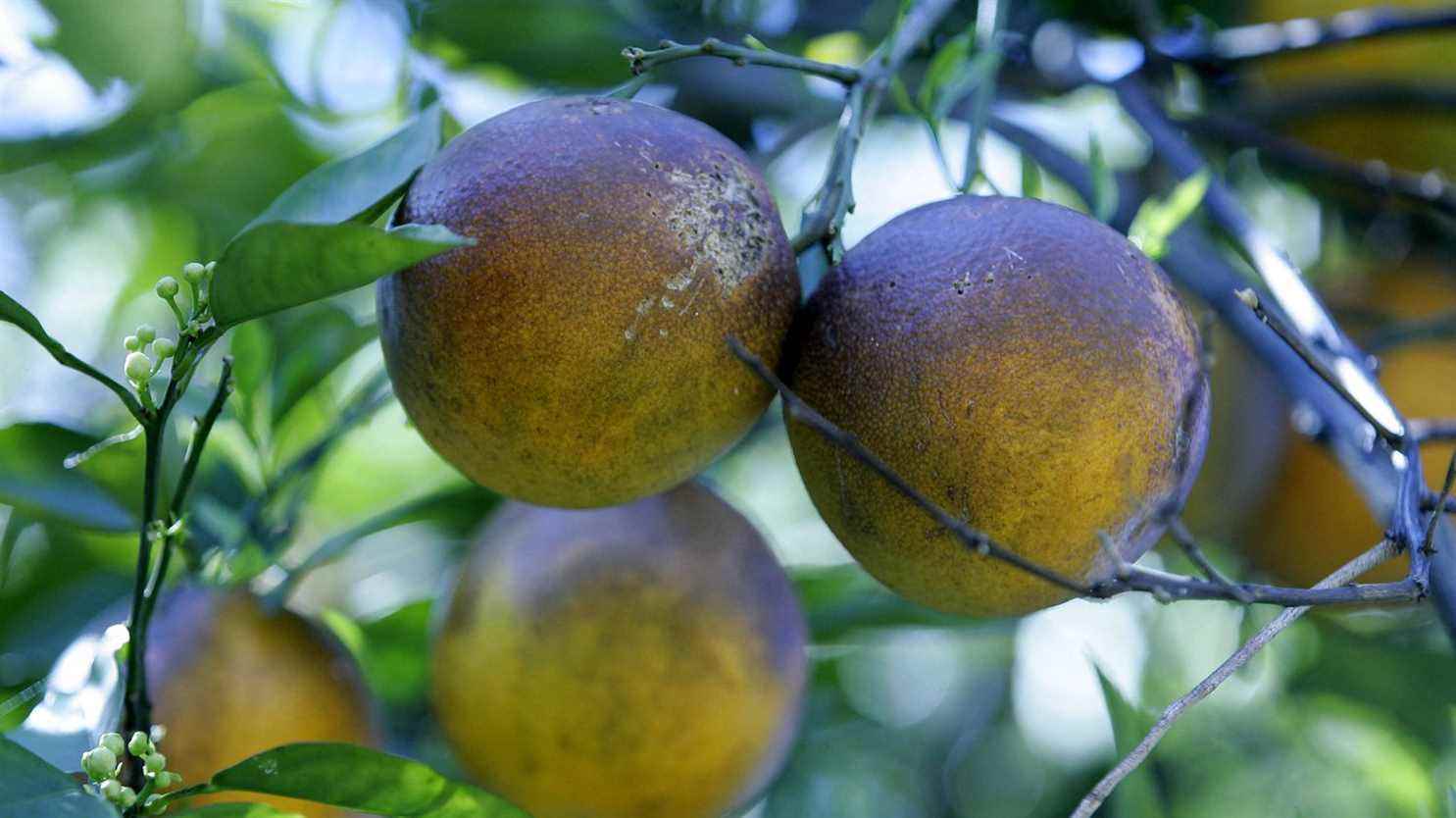World prices for orange juice are currently at their highest on the New York Stock Exchange, and it should not get any better in the coming months.
Article written by
Published
Update
Reading time : 1 min.
An insect, the size of a grain of rice, has become the terror of leading citrus growers. Native to China, the Asian psyllid first appeared in Brazil in the 1980s before establishing itself in Florida. Its presence has caused the production of oranges in these two areas, which are essential for the world market, to drop for several years.
Orange production in Florida this year is the lowest in more than 70 years because the Asian psyllid, which feeds on tree shoots, often carries on it a bacterium responsible for a devastating disease for plantations, the disease of the “yellow dragon” When the tree is reachedits leaves turn yellow, fruit growth slows down, they green and become more bitter. The tree ends up withering in less than five years, whereas an orange tree can normally live up to 30 years.
Guadeloupe is affected by this disease, the Mediterranean basin remains spared for the moment. Asian psyllid has been spotted in plantations in Spain and Portugal but without the bacteria so far. However, it is very likely that we will see the emergence of foci of infection soon, explains Raphaël Morillon, research director of the Center for International Cooperation in Agricultural Research for Development (CIRAD).
Scientists therefore call for the greatest vigilance to preserve European citrus orchards from the parasite and they also warn against the transport of plants from contaminated areas.
Unfortunately, there is no curative treatment for diseased trees, but it is possible to prolong their lifespan by playing on nutrient inputs and phytosanitary treatments. Researchers are also working on genetic solutions: by trying to identify from 300 sequenced citrus varieties the genes that are involved in better resistance to this disease. They hope to obtain more resistant citrus varieties in the future, but it is a long process, which will not be completed before ten years at best. Hence the importance of prevention in areas still spared.
